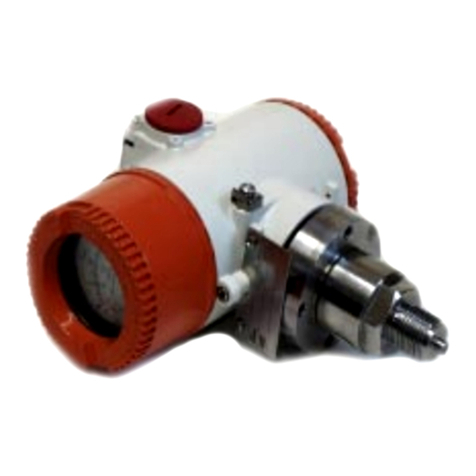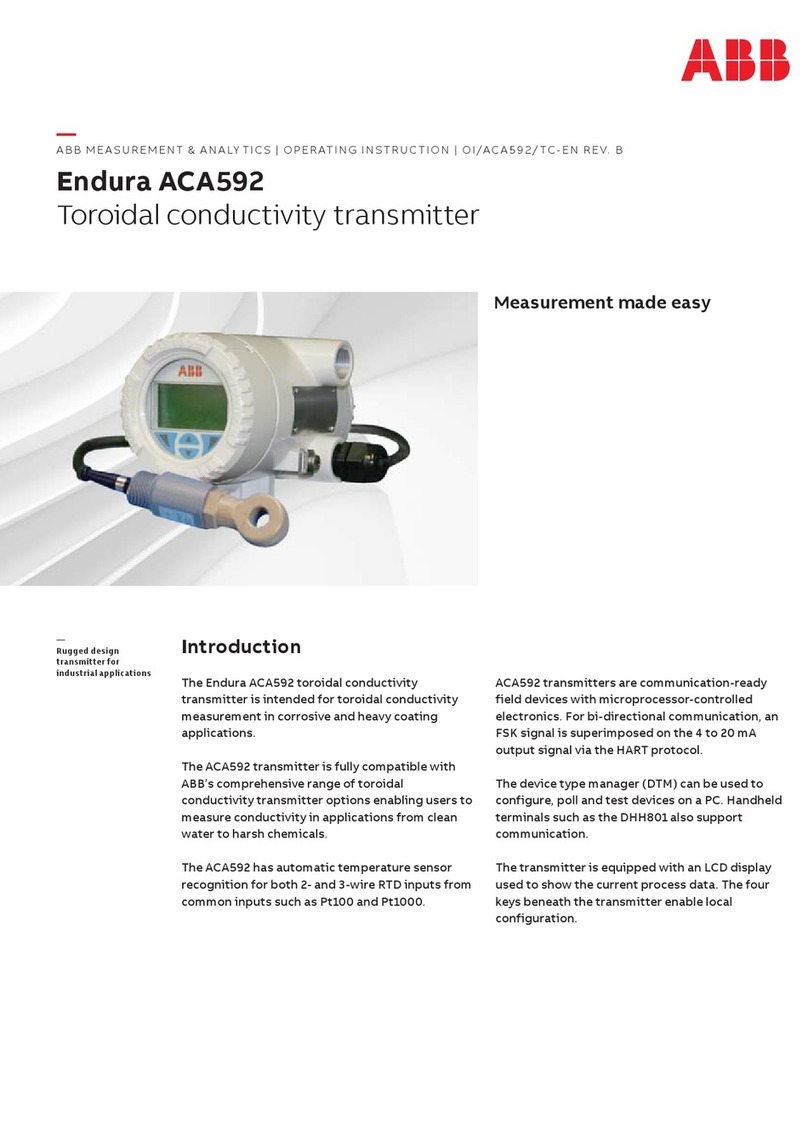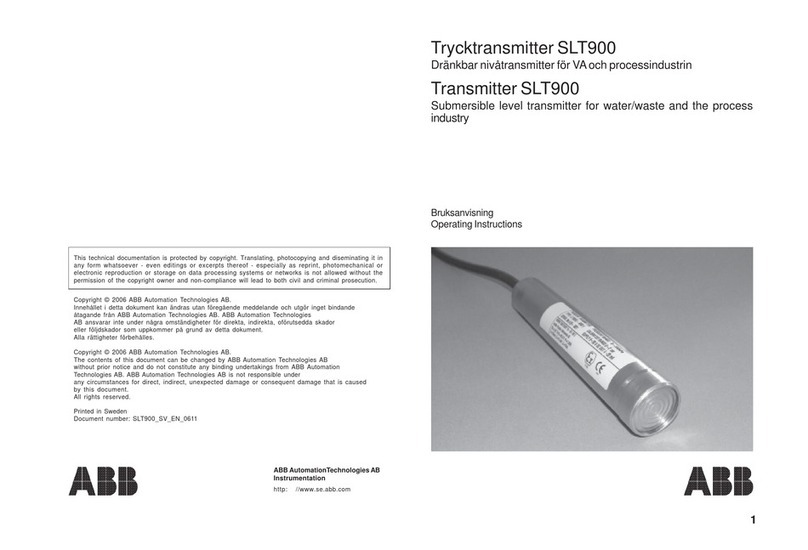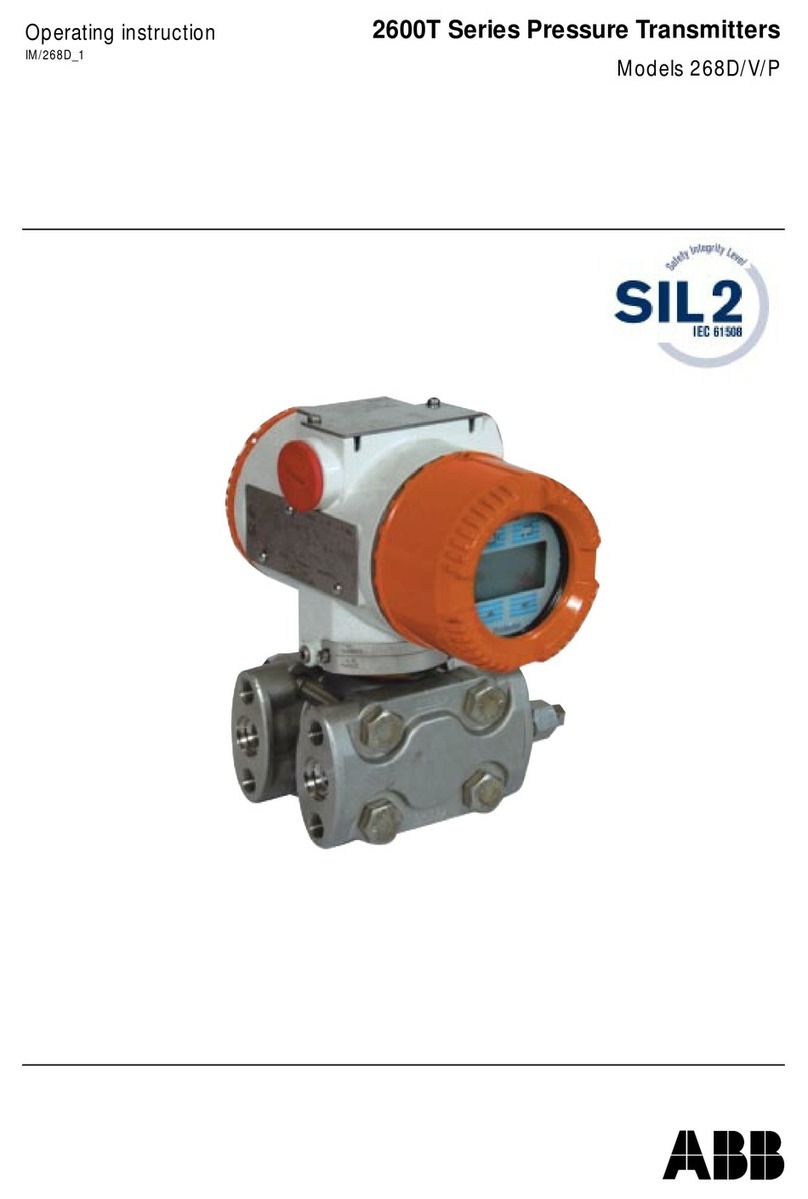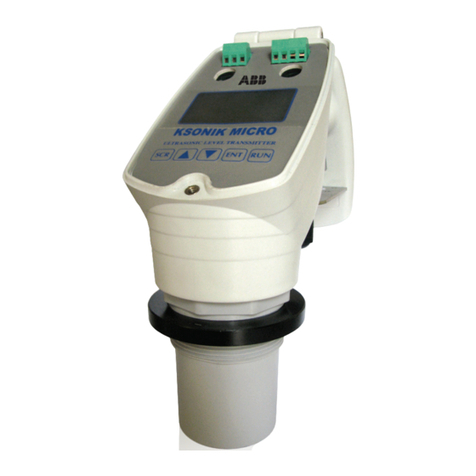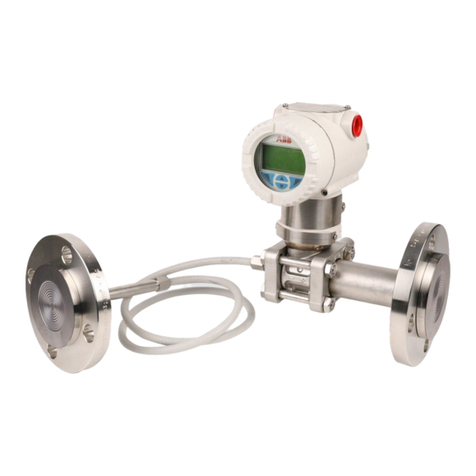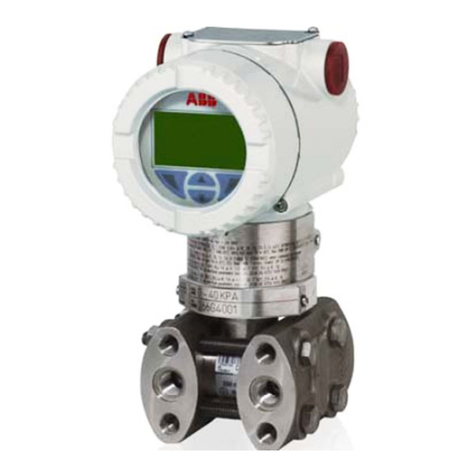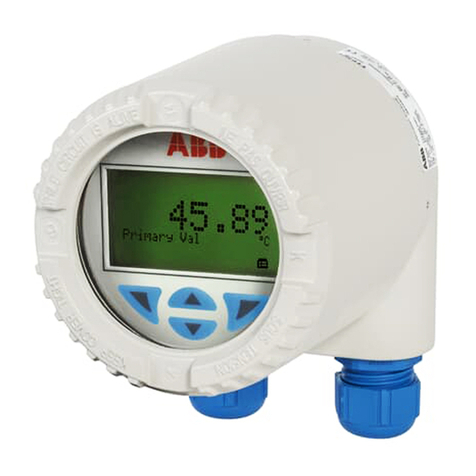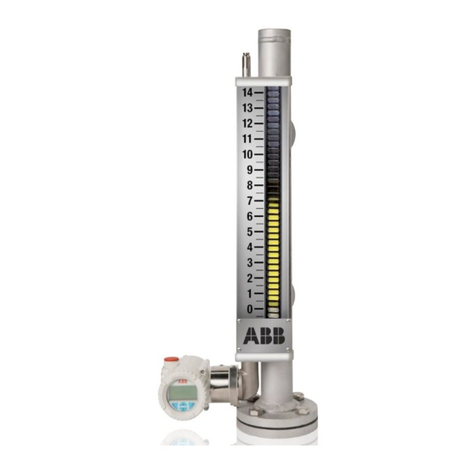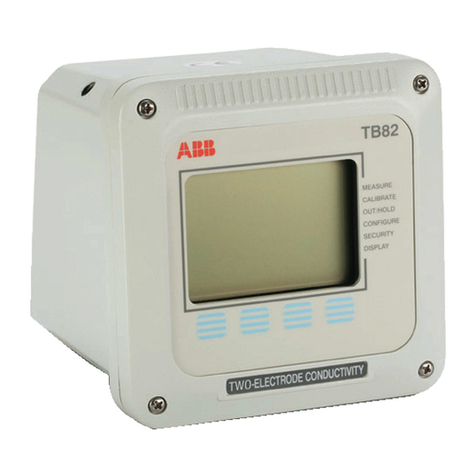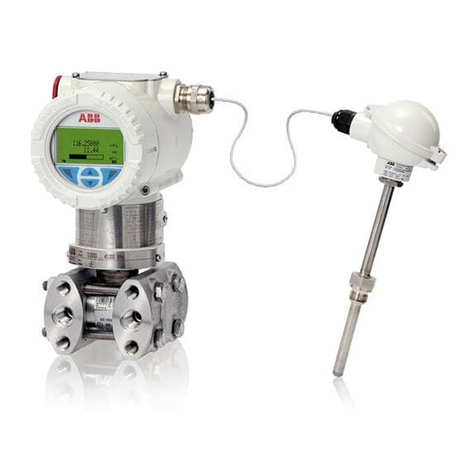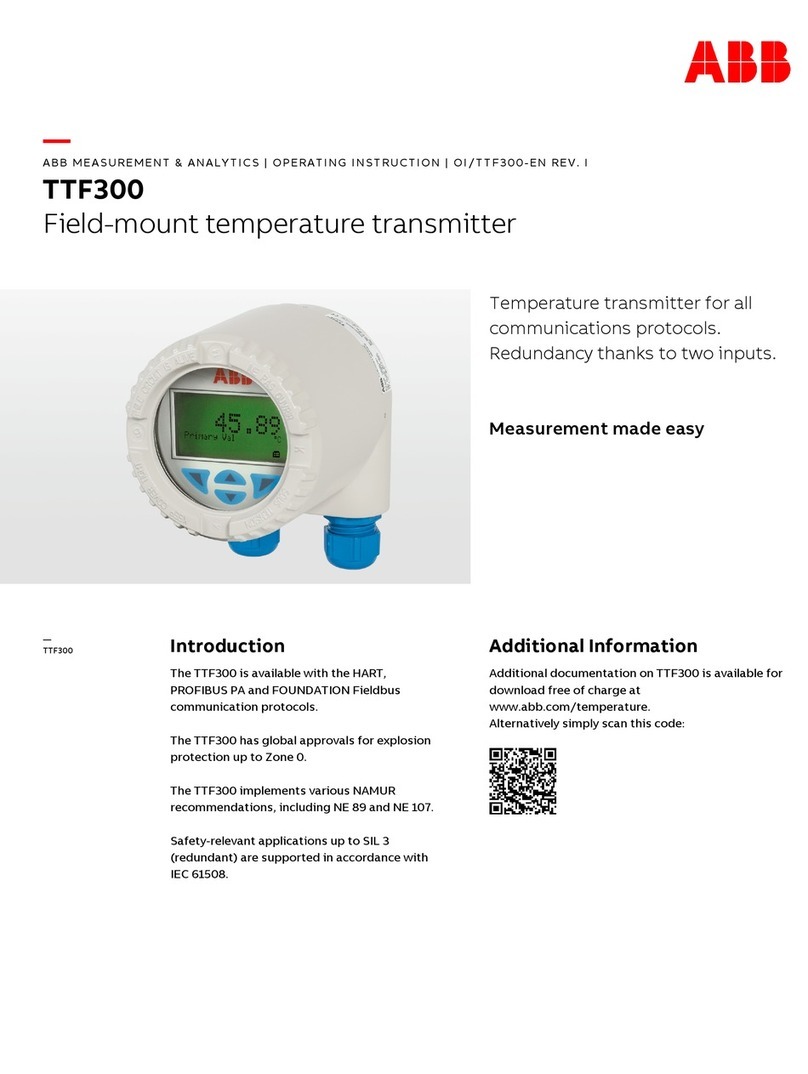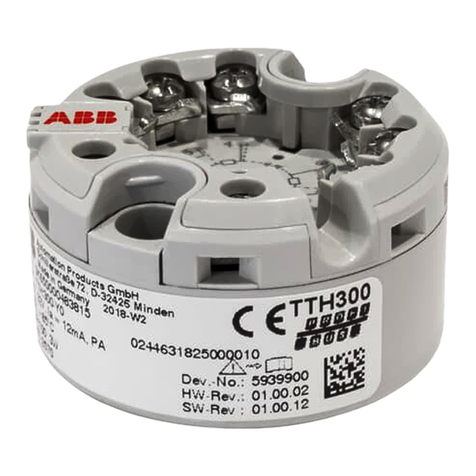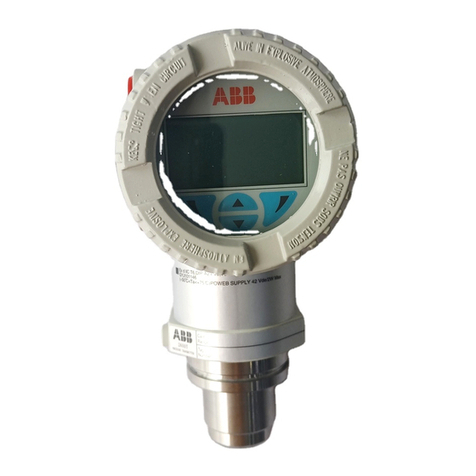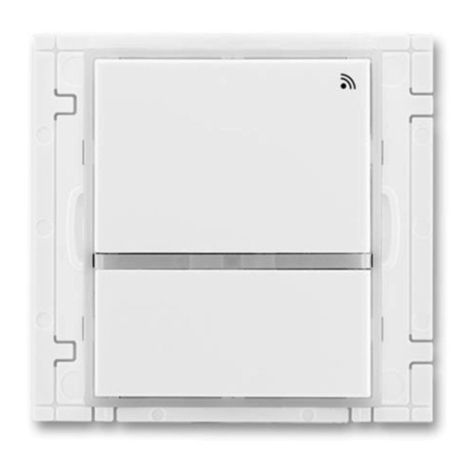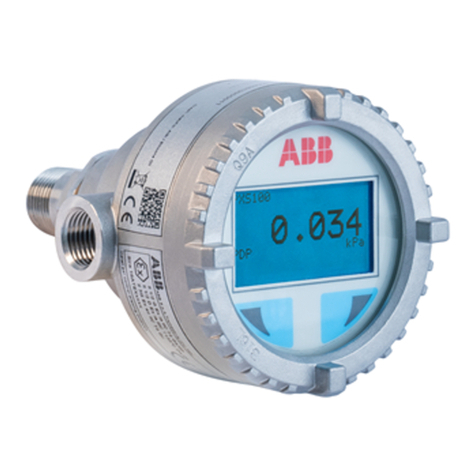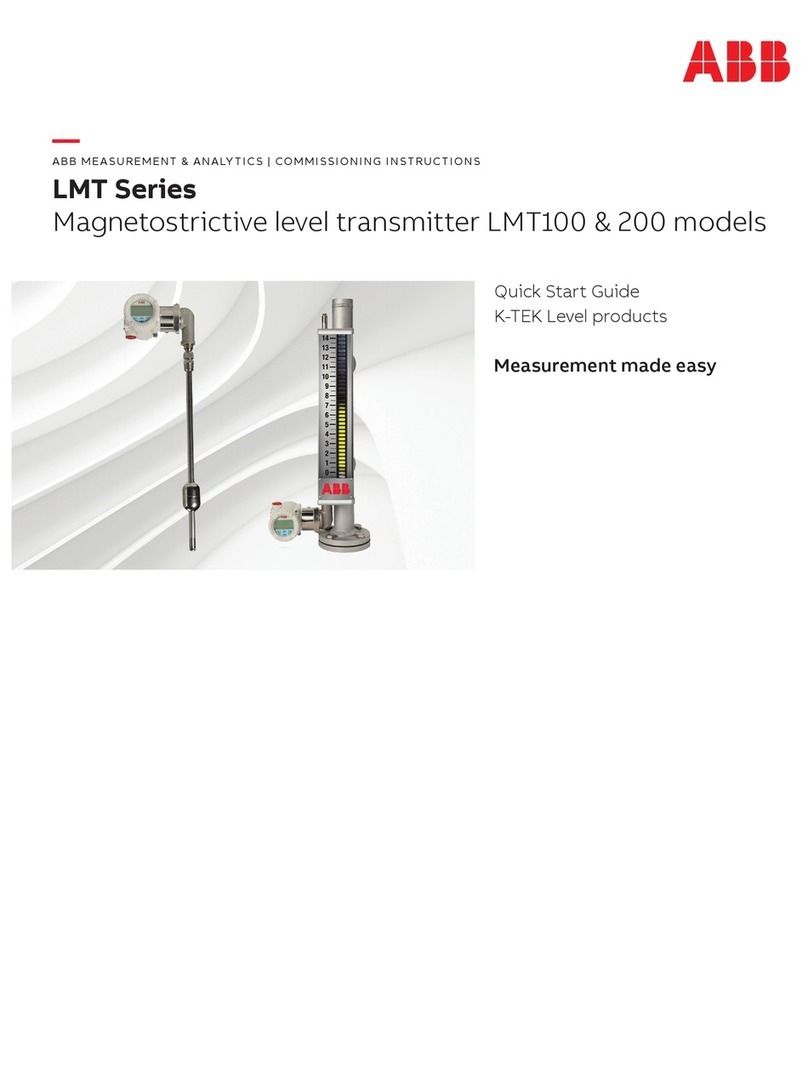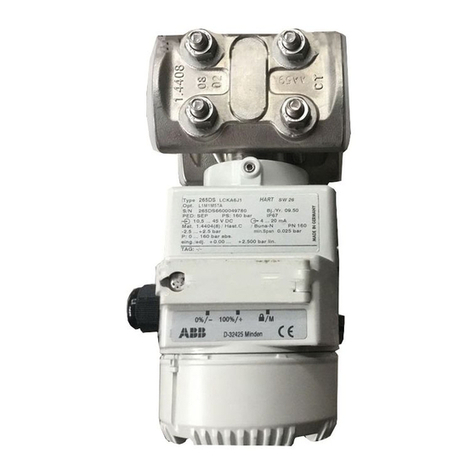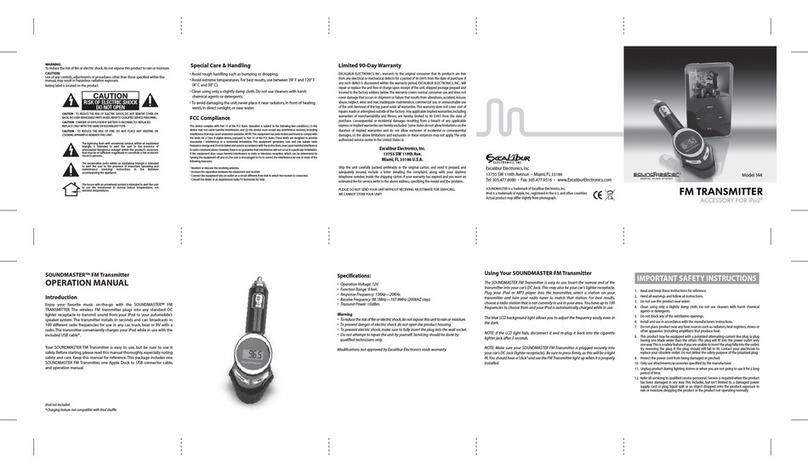
TTH300 | OI/TTH300-EN Rev. D 3
Contents
1Safety............................................................................... 5
1.1General information and instructions .................... 5
1.2Warnings ............................................................. 5
1.3Intended use........................................................ 5
1.4Improper use ....................................................... 5
1.5Warranty provisions ............................................. 5
2Use in potentially explosive atmospheres according to
ATEX and IECEx.............................................................. 6
2.1Ex-marking .......................................................... 6
2.1.1Transmitter .......................................................... 6
2.1.2LCD indicators..................................................... 6
2.2Temperature data ................................................ 6
2.2.1Transmitter .......................................................... 6
2.2.2LCD indicators..................................................... 6
2.3Electrical data ...................................................... 7
2.3.1Transmitter .......................................................... 7
2.3.2LCD indicators..................................................... 7
2.4Installation instructions......................................... 7
2.4.1ATEX / IECEx....................................................... 7
2.4.2IP protection rating of housing ............................. 7
2.4.3Electrical connections .......................................... 8
2.5Commissioning.................................................... 9
2.6Operating instructions.......................................... 9
2.6.1Protection against electrostatic discharges .......... 9
3Use in potentially explosive atmospheres in accordance
with FM and CSA .......................................................... 10
3.1Ex-marking ........................................................ 10
3.1.1Transmitter ........................................................ 10
3.1.2LCD indicators................................................... 10
3.2Installation instructions....................................... 11
3.2.1FM / CSA........................................................... 11
3.2.2IP protection rating of housing ........................... 11
3.2.3Electrical connections ........................................ 11
3.3Commissioning.................................................. 11
3.4Operating instructions........................................ 11
3.4.1Protection against electrostatic discharges ........ 11
4Function and System Design........................................ 12
4.1Input functionality............................................... 12
4.1.1Sensor Redundancy .......................................... 12
4.1.2Sensor drift monitoring....................................... 12
4.1.3Sensor error adjustment according to Callendar-
Van Dusen......................................................... 13
5Product identification.................................................... 13
5.1Name plate........................................................ 13
6Transport and storage .................................................. 14
6.1Inspection.......................................................... 14
6.2Transporting the device ..................................... 14
6.3Storing the device.............................................. 14
6.3.1Ambient conditions ............................................ 14
6.4Returning devices .............................................. 14
7Installation ..................................................................... 14
7.1Installation options ............................................. 14
7.1.1Installation in the cover of the connection head .. 14
7.1.2Installation on the measuring inset...................... 15
7.1.3Installation on the top-hat rail ............................. 15
7.2Installing / removing the optional LCD indicator .. 15
7.3Electrical connections ........................................ 16
7.3.1Conductor material ............................................ 16
7.3.2Pin configuration ................................................ 17
7.3.3Electrical data for inputs and outputs ................. 18
7.4Power supply..................................................... 20
7.4.1Power supply - HART ........................................ 20
7.4.2Power supply - PROFIBUS / FOUNDATION
Fieldbus............................................................. 21
8Commissioning.............................................................. 21
8.1General remarks ................................................ 21
8.2Checks prior to commissioning .......................... 21
8.3Basic Setup ....................................................... 21
9Operation....................................................................... 22
9.1Safety instructions.............................................. 22
9.2Hardware settings.............................................. 22
9.3Menu navigation ................................................ 22
9.4HART menu levels ............................................. 23
9.5PROFIBUS PA and FOUNDATION Fieldbus H1
menu levels........................................................ 23
9.5.1Process display.................................................. 24
9.5.2Switching to the information level(PROFIBUS PA
and FOUNDATION Fieldbus only)....................... 25
9.5.3Switching to the configuration level
(parameterization) .............................................. 25
9.5.4Selecting and changing parameters ................... 26
9.6HART parameter overview ................................. 27
9.7HART parameter description.............................. 28
9.7.1Menu: Device Info .............................................. 30
9.7.2Menu: Display.................................................... 30
9.7.3Menu: Process Alarm......................................... 30
9.7.4Menu: Communication....................................... 30
9.7.5Menu: Calibrate ................................................. 31
9.7.6Menu: Diagnosis ................................................ 31
9.7.7Activating write protection.................................. 31
9.7.8Deactivating write protection .............................. 31
9.8PROFIBUS PA and FOUNDATION Fieldbus
parameter overview............................................ 32
9.9PROFIBUS PA and FOUNDATION Fieldbus
parameter description ........................................ 33
9.9.1Menu: Device Setup........................................... 33
9.9.2Menu: Device Info .............................................. 34
9.9.3Menu: Communication....................................... 34
9.9.4Menu: Service Menu .......................................... 35
9.9.5Menu: Display.................................................... 35
9.9.6Menu: Calibrate ................................................. 36
9.10Factory settings ................................................. 36
